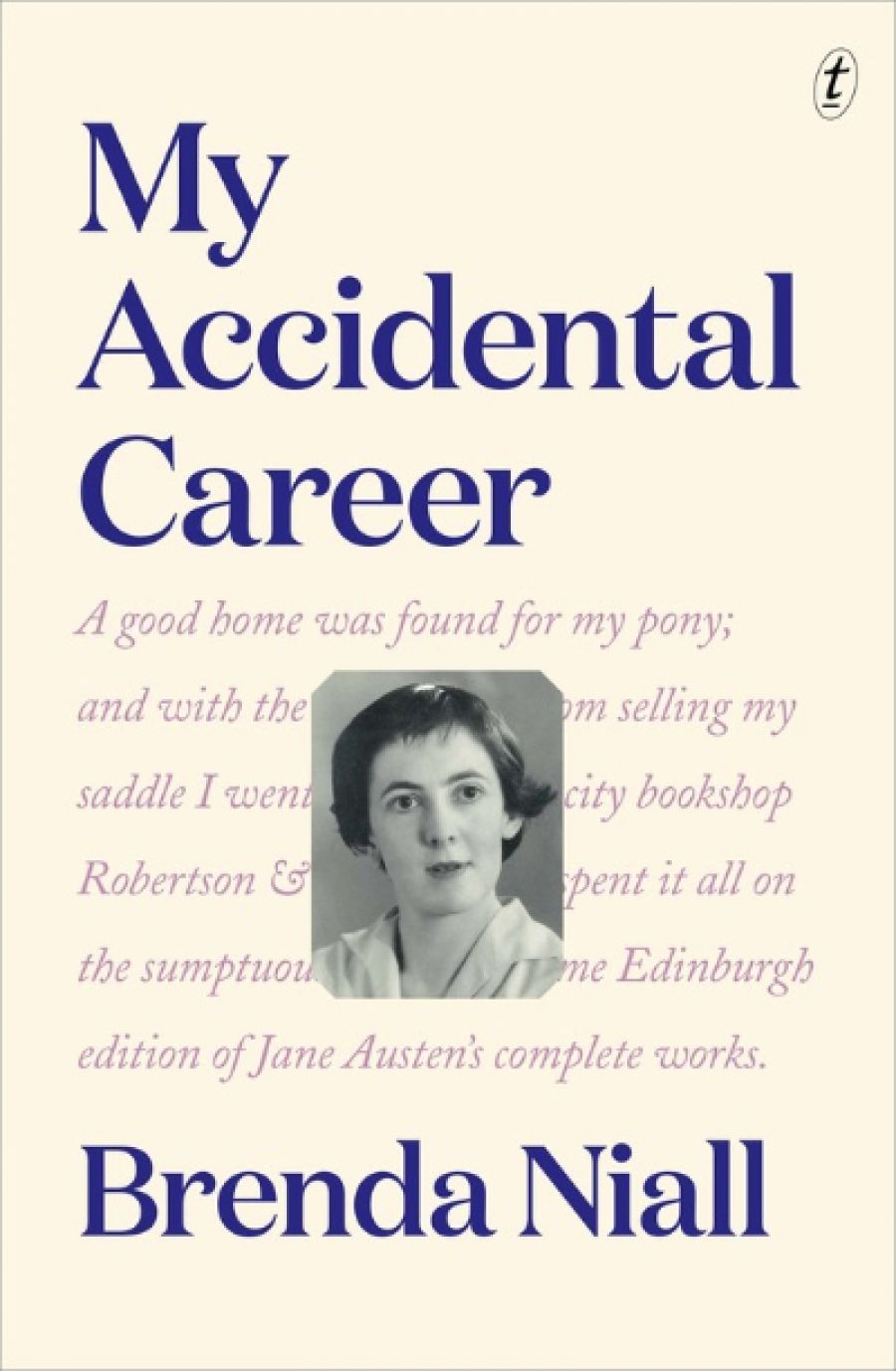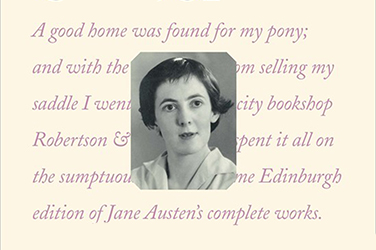
- Free Article: No
- Contents Category: Memoir
- Review Article: Yes
- Article Title: Quiet achiever
- Article Subtitle: Brenda Niall’s new memoir
- Online Only: No
- Custom Highlight Text:
It’s always interesting to see biographers decide to turn the spotlight upon themselves, and to ask why. Will it be another case of ‘now it’s my turn’? The need to confess, even to enter into the Land of Too Much Information?
- Featured Image (400px * 250px):

- Alt Tag (Featured Image): Jacqueline Kent reviews 'My Accidental Career' by Brenda Niall
- Book 1 Title: My Accidental Career
- Book 1 Biblio: Text Publishing, $34.99 pb, 293 pp
- Book 1 Readings Link: booktopia.kh4ffx.net/2rBMdQ
Brenda Niall is clear about her own motives in writing about her life. This is not an account of her development as a biographer – she has already done that, in Life Class (reviewed by Peter Rose in the April 2007 issue of ABR). Here, as many do, she has yielded to the compulsion to try to understand the events and patterns that have formed her own life. ‘Writers don’t have to stop,’ writes the woman whose biographies – of Daniel Mannix, Judy Cassab, the Boyds, and the Duracks, among others – have been winning acclaim and awards for decades now. ‘After writing nine biographies, I can ponder the events and encounters that got me to this point.’ My Accidental Career is also, as she says, ‘the story of a 1950s consciousness gradually waking up to a new world in which opportunity and equality were within a woman’s reach’.
Born in 1930, the youngest of three children in a middle-class Catholic family – her father was a prominent cardiologist – she had a comfortable and protected childhood in the affluent Melbourne suburb of Kew. She suffered badly from asthma, often having to miss school, and like other children who have to spend a great deal of time at home, she evidently became a thoughtful and introspective child. Her family lived in a Catholic enclave: one of their neighbours was Archbishop Daniel Mannix, often seen striding into work in St Patrick’s Cathedral, his route taking him through working-class Collingwood, where he distributed sixpences to children.
 Brenda Niall (photograph via Text Publishing)
Brenda Niall (photograph via Text Publishing)
At school – like other girls in her cohort – she was taught to value the virtues of unselfishness and submissiveness; ‘the supposedly feminine qualities of quietness and gentleness were supreme’, she writes. The important thing was learning how to be this version of a good Catholic wife and mother. Some well-known women rebelled against the rule of the nuns – see Germaine Greer and Susan Ryan, among many others – but Niall saw no need to join them. In most cases, she says, the kindness of the nuns somehow coexisted with the rigidity of their rule. She had good teachers, too – Niall was the only student from a Catholic girls’ school to win a Special Exhibition at Matriculation, and one of only five girls to do so in Victoria.
At the University of Melbourne she worked hard, did brilliantly, and was noticed. Family connections got her a job with B.A. Santamaria’s Catholic Action as a researcher; a job she thoroughly enjoyed. She fell in and out of love, travelled, and returned to Australia, still without knowing what career she wanted. The new Australian National University provided an answer, and she embarked on a thesis about Edith Wharton under A.D. Hope. She settled happily in Canberra and subsequently taught at Monash University. At a time when academic opportunities were beginning to open up for bright women, she began a distinguished career, not just in academe but also, later, as a biographer and critic.
Niall readily acknowledges the help and support she received from male colleagues, including Hope, Bob Brissenden, and Bill Scott. It is heartening to be reminded that this did, and does, happen – perhaps more often than one is sometimes told. (It’s also true that men often find it easier to give support to a female colleague who does not rock any boats.)
Has her career been accidental? It’s probably true that most – if not all – careers fail to progress entirely according to plan. Niall benefited to some extent from happening to be in the right place at the right time, as is often the case. She has been shrewd enough to take advantage of fortunate accidents, both in her academic career and in her work as a biographer.
Niall is a clear and sometimes stately writer; she comes across as an astute and confident girl, and woman, who knows how to keep her own counsel and who just gets on with things. Anyone seeking highly coloured descriptions of emotion will not find them in this book. As in her biographical and critical work, she generally prefers to keep some distance from the reader, to explain rather than to empathise or to seek sympathy.
As always with Niall, My Accidental Career repays close and attentive reading, for much is going on beneath the even surface of her words. Sometimes her discretion about seismic events can be a little frustrating – we are told little about her emotional life. The sudden death of her lover and mentor Grahame Johnston must have been absolutely devastating, for example. But sometimes, and very effectively, her apparently smooth words conceal depth charges. As she and her mother hold vigil at her dying father’s bedside, Niall is shocked when her mother assures a visitor that he will recover. Her mother explains: ‘You never know what he might hear. Hearing is the last thing to go.’ Niall makes no comment about how wrenching this must have been for her mother: she lets the reader do that work, here as elsewhere. The occasional tart aside is also welcome.
This, then, is the story of a rich and satisfying life of creative achievement, as well as being an individual portrait of the 1950s. It is good to be reminded of a time when universities were places where the life of the mind, not that of the abacus, was essential.


Comments powered by CComment